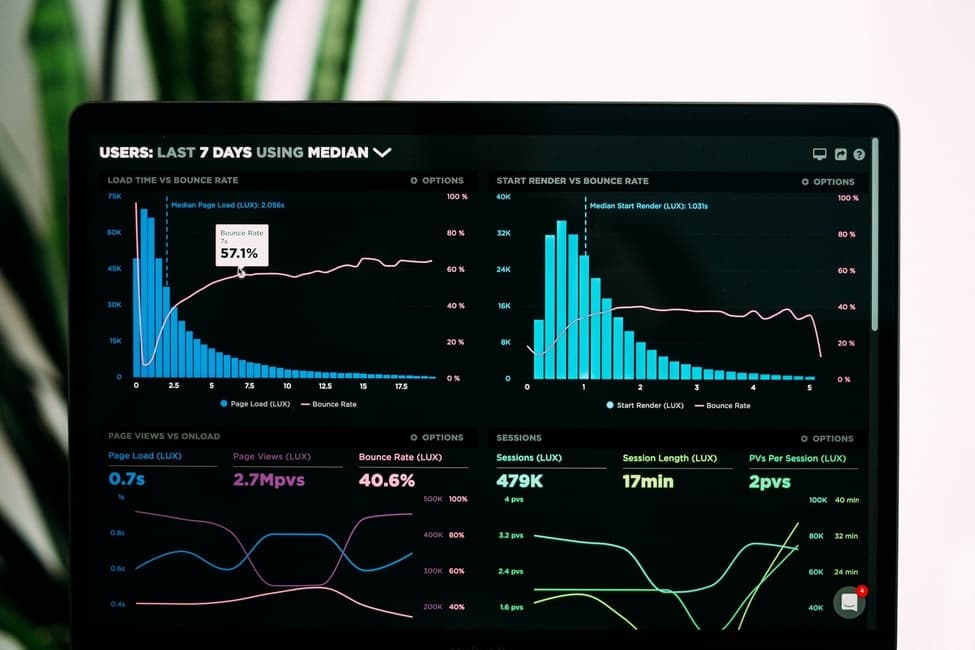Data science and analytics have fundamentally transformed the way business decisions are taken. Instead of hunches and trial-n-errors, business owners today rely on hard facts backed by data, to analyze how their business is doing and what they need to tweak. However, big data is still considered a rather complex area by many businesses, and isn’t hence being utilized to its full potential.
There is also the challenge of too much data. Gleaning actionable insights from reams of data takes far too long and is riddled by human errors and biases. To overcome all these challenges and create a more conducive environment for adoption of data analytics, newer technologies are constantly being developed.
Here are 10 trends in data science that will cause a disruption for companies still wrapping their heads around big data. from augmented analytics that minimize the need to hire expensive data scientists to continuous intelligence that lets business marketers and owners draw real time insights and take quick decisions, these trends will get your business fine-tuned to the vast advantages of data analytics.
There is also the challenge of too much data. Gleaning actionable insights from reams of data takes far too long and is riddled by human errors and biases. To overcome all these challenges and create a more conducive environment for adoption of data analytics, newer technologies are constantly being developed.
Here are 10 trends in data science that will cause a disruption for companies still wrapping their heads around big data. from augmented analytics that minimize the need to hire expensive data scientists to continuous intelligence that lets business marketers and owners draw real time insights and take quick decisions, these trends will get your business fine-tuned to the vast advantages of data analytics.
#1 Augmented Analytics
The entire massive ecosystem of data is after all built to sustain the one thing called insights. Without the ability to extract precise, actionable insights, data is just simply of no use. And extracting even one truly workable insight from an ocean of data is a very complex task. Quality Big Data professional who can get the job done are few and expensive.
And even if they end up spending a large chunk of their billable hours doing the tedious work of collating, cleaning, labeling and organizing the data. Then they go looking for patterns and analyze endless tables of data to find something that they can finally call useful. A great deal of time, effort and resources are spent on this and yet, the results aren’t always spectacular. This is an industry-wide challenge for data scientists.
Augmented analytics aims to solve this problem. By automating the process of insight generation, augmented analytics can reduce a company’s dependence on data scientists.
While not very mature yet, this technology is set to grow very fast in the coming years and become proficient in cleaning and sorting data, analyzing it, identifying patterns and correlations, to ultimately generate insights that businesses can directly act upon to influence positive outcomes. An augmented analytics engine can be used directly by a company’s marketers or business owners, and generate business insights with little to no supervision of a data scientist or business analyst.
And even if they end up spending a large chunk of their billable hours doing the tedious work of collating, cleaning, labeling and organizing the data. Then they go looking for patterns and analyze endless tables of data to find something that they can finally call useful. A great deal of time, effort and resources are spent on this and yet, the results aren’t always spectacular. This is an industry-wide challenge for data scientists.
Augmented analytics aims to solve this problem. By automating the process of insight generation, augmented analytics can reduce a company’s dependence on data scientists.
While not very mature yet, this technology is set to grow very fast in the coming years and become proficient in cleaning and sorting data, analyzing it, identifying patterns and correlations, to ultimately generate insights that businesses can directly act upon to influence positive outcomes. An augmented analytics engine can be used directly by a company’s marketers or business owners, and generate business insights with little to no supervision of a data scientist or business analyst.

#2 Augmented Data Management
Much like augmented analytics that automates the process of analyzing data, augmented data management is a technology poised to make data management easier and more efficient. By making enterprise metadata more dynamic, augmented data management makes databases self-configuring and self-tuning.
Data preparation is the most time consuming and yet, the most critical task in analytics. As is popularly said about analytics, garbage in = garbage out. To be able to do anything meaningful with data, huge numbers of datasets from diverse sources in various forms need to be unified into a smart business data grid. According to a study by Gartner, organizations report spending 60% of their time in data preparation, leaving very little time to do the actual analysis.
By leveraging advanced algorithms, sophisticated AI and automated machine learning, augmented data management can make this entire process automated, freeing up hours and hours of manually entering, sorting and unifying the data. Gartner predicts a 45% reduction in manual data management by the end of next year.
Data preparation is the most time consuming and yet, the most critical task in analytics. As is popularly said about analytics, garbage in = garbage out. To be able to do anything meaningful with data, huge numbers of datasets from diverse sources in various forms need to be unified into a smart business data grid. According to a study by Gartner, organizations report spending 60% of their time in data preparation, leaving very little time to do the actual analysis.
By leveraging advanced algorithms, sophisticated AI and automated machine learning, augmented data management can make this entire process automated, freeing up hours and hours of manually entering, sorting and unifying the data. Gartner predicts a 45% reduction in manual data management by the end of next year.
#3 Continuous Intelligence
Increasingly, businesses need to operate in a dynamic environment and improve decisions in real time. With the help of continuous data, and the aforementioned augmented analytics, businesses will be able to deploy what Gartner calls ‘Continuous intelligence’ that essentially helps businesses analyze incoming data contexts in real time, by using frictionless cycle time to derive continuous business value from data and prescribing immediate decisions to improve outcomes.
Essentially, every customer interaction can help improve the next one. That’s the power of continuous intelligence. It can perform real-time analytics and prescribe solutions using decision automation and augmented analytics. Thanks to continuous intelligence, you'll be able to turn data into brand devotion for business longevity.
Continuous intelligence will be a sweeping trend within the next year or two, with businesses adopting it to deploy better solutions in real time. No matter how many data sources the data streams in from, or how vast or complex it is, this modern ML-driven approach will help businesses accelerate analytics and decision making.
Essentially, every customer interaction can help improve the next one. That’s the power of continuous intelligence. It can perform real-time analytics and prescribe solutions using decision automation and augmented analytics. Thanks to continuous intelligence, you'll be able to turn data into brand devotion for business longevity.
Continuous intelligence will be a sweeping trend within the next year or two, with businesses adopting it to deploy better solutions in real time. No matter how many data sources the data streams in from, or how vast or complex it is, this modern ML-driven approach will help businesses accelerate analytics and decision making.
#4 Explainable AI
As the above three trends suggest, business analytics is all set to become a largely machine-driven process, quickly subjugating the need for human intervention.
However, with AI and ML performing all the complex analyses and taking all the critical decisions on their own, the entire process could become a cryptic black box with little explanation of why a certain decision was taken. However, businesses can’t always leave it at decision automation and sometimes, there is a need to justify why a certain decision was taken, such as when stakeholders or users wish to know more.
Explainable AI is a technology that will auto-generate an explanation, summarizing why a decision was taken. By citing attributes, accuracy, statistics and other sufficient collateral, the AI technology will explain the need and relevance of a decision.
However, with AI and ML performing all the complex analyses and taking all the critical decisions on their own, the entire process could become a cryptic black box with little explanation of why a certain decision was taken. However, businesses can’t always leave it at decision automation and sometimes, there is a need to justify why a certain decision was taken, such as when stakeholders or users wish to know more.
Explainable AI is a technology that will auto-generate an explanation, summarizing why a decision was taken. By citing attributes, accuracy, statistics and other sufficient collateral, the AI technology will explain the need and relevance of a decision.
#5 Graphs
Over the next two years, graphs are going to become even more important and widely used, with their application increasing by 100% through last year.
Graph analytics are a core component of analytics that study the relationships between different objects on a graph. On social media for instance, it can answer questions like how many ‘likes’ or ‘shares’ does a post have on an average, or how many ‘followers’ can an influencer amass.
Essentially, graphs are mathematical structures that can be used to model various relationships in information systems, consisting of nodes and edges representing entities and their relationships in a system. Mapped carefully, they become powerful data structures that can be used to represent complex dependencies in data.
Graph analytics are a core component of analytics that study the relationships between different objects on a graph. On social media for instance, it can answer questions like how many ‘likes’ or ‘shares’ does a post have on an average, or how many ‘followers’ can an influencer amass.
Essentially, graphs are mathematical structures that can be used to model various relationships in information systems, consisting of nodes and edges representing entities and their relationships in a system. Mapped carefully, they become powerful data structures that can be used to represent complex dependencies in data.
#6 Data Fabric
Distributed data environments wherein a part of the data lives on-premise and a part of it on the cloud, data fabric is what provides businesses a unified and comprehensive view of it, and helps organizations better deal with diversified data on multiple platforms. It converges storage, processing, management and analysis of disparate data.
This way, a data fabric enables applications and tools across different interfaces such as network file system (NFS), portable operating system interface (POSIX), Hadoop distributed file system (HDFS) and Apache KAFKA streamline in real time and present a cohesive data story that makes business sense.
With distributed data environments becoming increasingly common, bespoke data fabric designs will become widely adopted to improve the data mesh of a business. for a consistent and unifies data management framework, businesses will spend more on completely redesigning their data mesh.
This way, a data fabric enables applications and tools across different interfaces such as network file system (NFS), portable operating system interface (POSIX), Hadoop distributed file system (HDFS) and Apache KAFKA streamline in real time and present a cohesive data story that makes business sense.
With distributed data environments becoming increasingly common, bespoke data fabric designs will become widely adopted to improve the data mesh of a business. for a consistent and unifies data management framework, businesses will spend more on completely redesigning their data mesh.
#7 Conversational Analytics
Natural language processing, a subset of AI and ML has rapidly become commonplace and by the end of the decade, 65% of all analytical queries will be generated by voice. In the next few years, more customers will interact with chatbots and smart speakers like Alexa, ChatGPT, Gemini, Llama and Deepseek.
Gathering voice data and analyzing it will become a key part of every business’ data analytics strategy. Analytics of conversational data can be tricky and the tech is still maturing. However, voice tech is very much a common part of life today and conversational analytics will see broader adoption for certain.
Gathering voice data and analyzing it will become a key part of every business’ data analytics strategy. Analytics of conversational data can be tricky and the tech is still maturing. However, voice tech is very much a common part of life today and conversational analytics will see broader adoption for certain.
#8 Commercial AI and ML
In today’s world, you can already leverage AI to grow your business. Now that the technologies of AI machine learning have adequately matured, more and more commercial players are stepping in to the scene. In through this year, AI and ML can be expected to become more commercial than open source.
Commercial vendors will build connectors into the open source ecosystem and build bespoke systems fine-tuned to individual businesses. While open source has been the basis for democratization of AI and ML and well as a driver for innovation in this field, commercial AI and ML aim to increase ease and convenience by bringing forth scalable solutions such as project management, model management, data reuse, transparency and lineage.
It also ensures integration and platform cohesiveness which is currently a bit of challenge in open source AI. These customized, enterprise ready technologies will reduce deployment time and enable businesses to see faster results. Through the next couple of years, we will see more AI and ML startups leveraging open source AI to build these sophisticated commercial solutions.
Commercial vendors will build connectors into the open source ecosystem and build bespoke systems fine-tuned to individual businesses. While open source has been the basis for democratization of AI and ML and well as a driver for innovation in this field, commercial AI and ML aim to increase ease and convenience by bringing forth scalable solutions such as project management, model management, data reuse, transparency and lineage.
It also ensures integration and platform cohesiveness which is currently a bit of challenge in open source AI. These customized, enterprise ready technologies will reduce deployment time and enable businesses to see faster results. Through the next couple of years, we will see more AI and ML startups leveraging open source AI to build these sophisticated commercial solutions.
#9 Blockchain
Blockchain works to ensure trust among unrelated participants by maintaining a decentralized ledger of all economic transactions which cannot be manipulated. The rising interest in cryptocurrency led to the emergence of blockchain in general but over time it has been seen as useful in any transaction of value.
So where do blockchain and data science converge and what happens when they do? Blockchain helps ensure data integrity while data science gathers and analyses data.
In the realm of analytics, blockchain helps validate data, making it impossible to manupulate, thus ensuring the privacy and security of data.blockchain can help detect fraudulent data in documents and forms, prevent malicious activities, performing predictive analysis and managing data sharing.
So where do blockchain and data science converge and what happens when they do? Blockchain helps ensure data integrity while data science gathers and analyses data.
In the realm of analytics, blockchain helps validate data, making it impossible to manupulate, thus ensuring the privacy and security of data.blockchain can help detect fraudulent data in documents and forms, prevent malicious activities, performing predictive analysis and managing data sharing.

#10 Persistent Memory Servers
Increasing volumes of data and the rising impetus on security especially in the realm of financial transactions is fueling the need for better solutions in persistent memory technology. High performance workloads require sophisticated solutions for mass memory that are secure and scalable. Persistent memory servers will rise in demand as they can provide cost-effective solutions, improve application performance, speed up boot times, improve availability and reduce complexity.
The bottom line of business disruption through the hottest data and analytics trends
Even as data analytics comes of age, not enough businesses have been able to adopt this technology to its maximum potential in their operations. With the available tools, you now can easily get and analyze your competitors' data even if you're on a bootstrapped budget. A lot of companies use data-driven approaches for their email marketing campaigns, their SEO strategy and more but this is just the beginning.This is in part attributed to the still somewhat complex nature of data science. The aforementioned trends in data analytics signal towards a future where data analytics will be much more democratized, accessible and perhaps cheaper for businesses to adopt on a large scale. augmented analytics will definitely prove to be a game changer and data fabric, conversation analytics and bespoke commercial AI solutions are simply a response to the way data science applications have become widespread.
Growth Hackers is surely among the best data analytics agencies, not just another classic marketing agency. We work with the latests marketing, data & analytics trends to make sure our clients leverage the hottest technologies out there. When you work with Growth Hackers, you work with a team of experts in different fields: copywriting, designers, developers, data scientists and more. We gather talents to help businesses grow. If you're looking for new ways to grow your business, generate leads, improve your conversions and get more sales, get in touch with Growth Hackers now.





4 Comments
Thanks for sharing the data analytics info. Great post!
Thanks for sharing this insightful post. Can you imagine I am presently working on this stuff? And as all your posts, every thing is clear and detailed.
Hi Gaurav, you have really done great work, you ‘ve carefully selected great resource on big data for business. I benefited much from it. It relates so much to me. Thanks a lot!
Thanks for sharing such an informative post about data and analytics. This is what I do every day and I still found useful info in your article. Keep sharing!